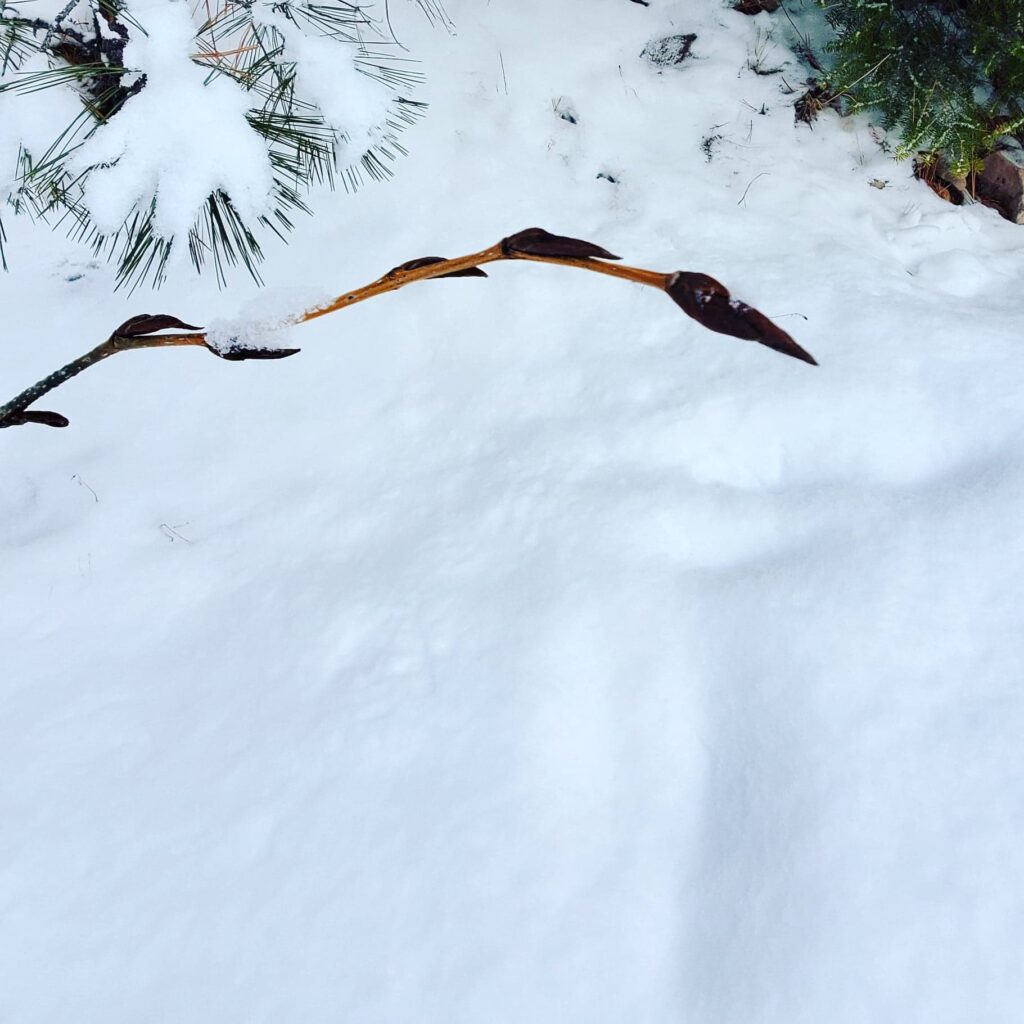Cottonwood
The aroma of the cottonwood bud and resin is intoxicating. This is the time of year I notice it the most, although there are certain spots I walk/ski/hike regularly that I can catch a whiff in the depths of winter. The trees these magical buds spring from are deciduous trees or large shrubs with catkin-type flowers. There are many species of cottonwood (Populus) and most can be used interchangeably. The variety most commonly used medicinally (by me for sure) is probably Populus trichocarpa, black cottonwood. The cottonwood bud is also referred to as a poplar bud, or balm of Gilead.

The buds in early spring are like gold. I take a small glass jar, to an unsprayed area and fill it. I like to harvest the buds from broken branches whenever possible, which is really easy along the river bank, a smidge out of town. You can find cottonwoods in the woods too, they prefer moist areas, in fact this one was on a ski a few days ago. The buds are almost ready to come home with me, in that jar.

The cottonwood catkins and leaf buds are edible, but kind of gross. All poplars contain varying amounts of salicin, the active ingredient in aspirin. The bark and leaves of the tree are also medicinal. We’re just visiting the buds this week. The resin within is the gold. It is red and really really sticky, so be prepared to get a bit messy. You’ll smell good though, I promise.
How do we use this plant in our family?
This plant is high in antioxidants and can be used medicinally in numerous ways both topically and internally. My favorite way to use it is as a body oil, or in a salve. But, to make a salve you’ll first need to make a body oil, but don’t fret, that is really quite simple. All you need is cold-pressed olive oil and that small jar of poplar buds and some patience.
Cottonwood has an energetic cooling effect on hot, acute inflammation, and topical application is very effective. I use it on burns, chapped or irritated skin, lips, cuts, scratches, wounds, bites, and bruises and just whenever/wherever I want to smell it.

Internally (or externally) a tincture can be used, which you can easily make yourself by infusing your buds in really strong alcohol or Everclear. Make a tea, which we’re all very familiar with by now, thanks to many (or maybe ALL) of our other Rainbow Plants!
I like to gargle tea made from the sticky buds for sore throats and coughs (swallow it, if you dare). Cottonwood tea or tincture can also be your friend if you suffer from poor digestion, fever and respiratory issues.

I will make a small batch of salve/lip balm, available in the Rainbow Shop. Don’t be fooled by the lip balm container, this product can be used other places than your sweet lips.

Leave a Reply